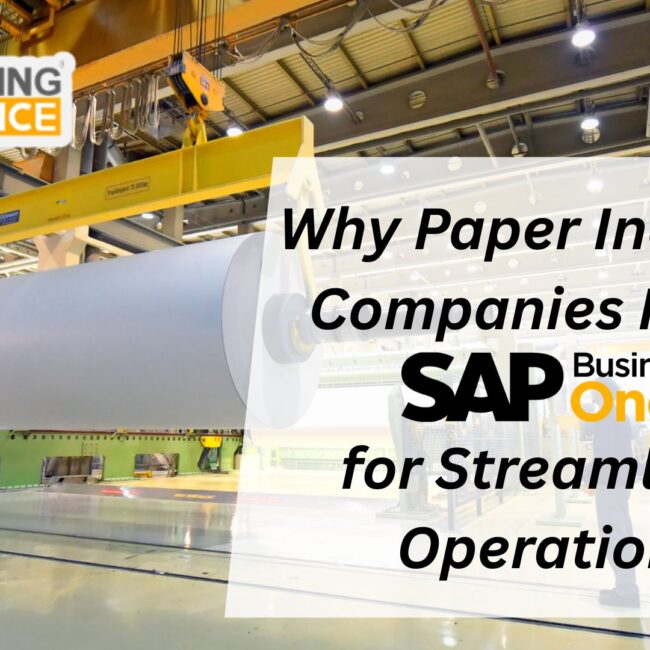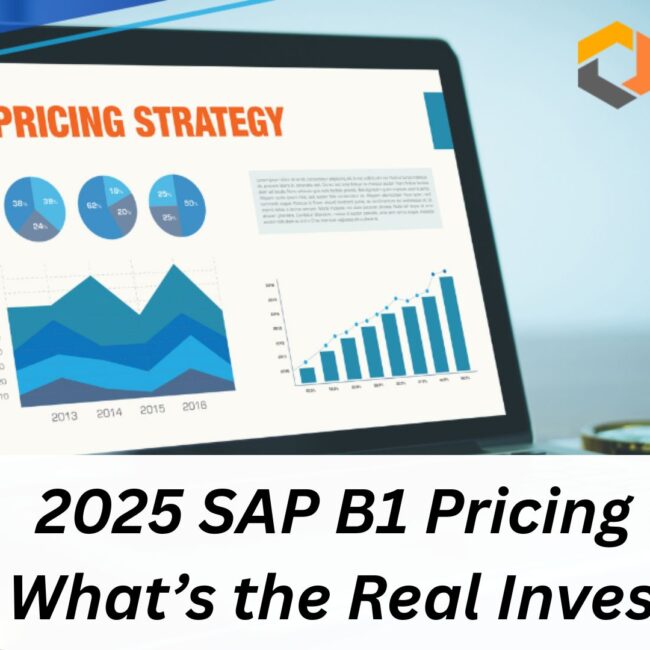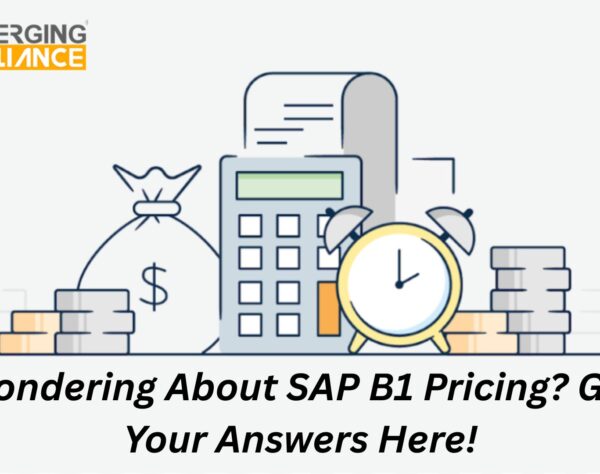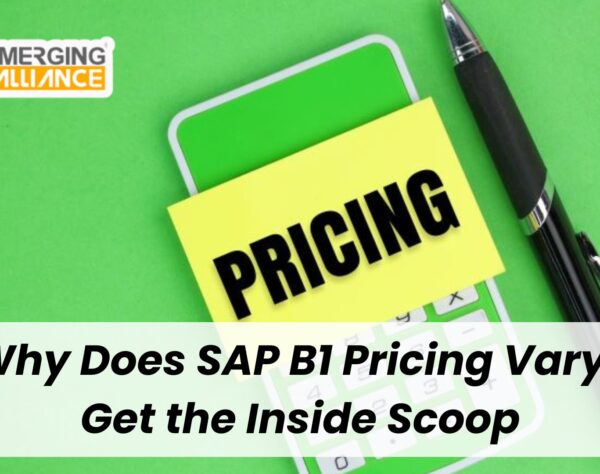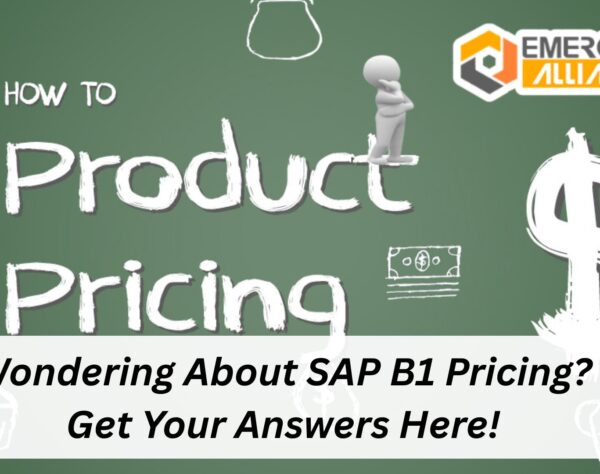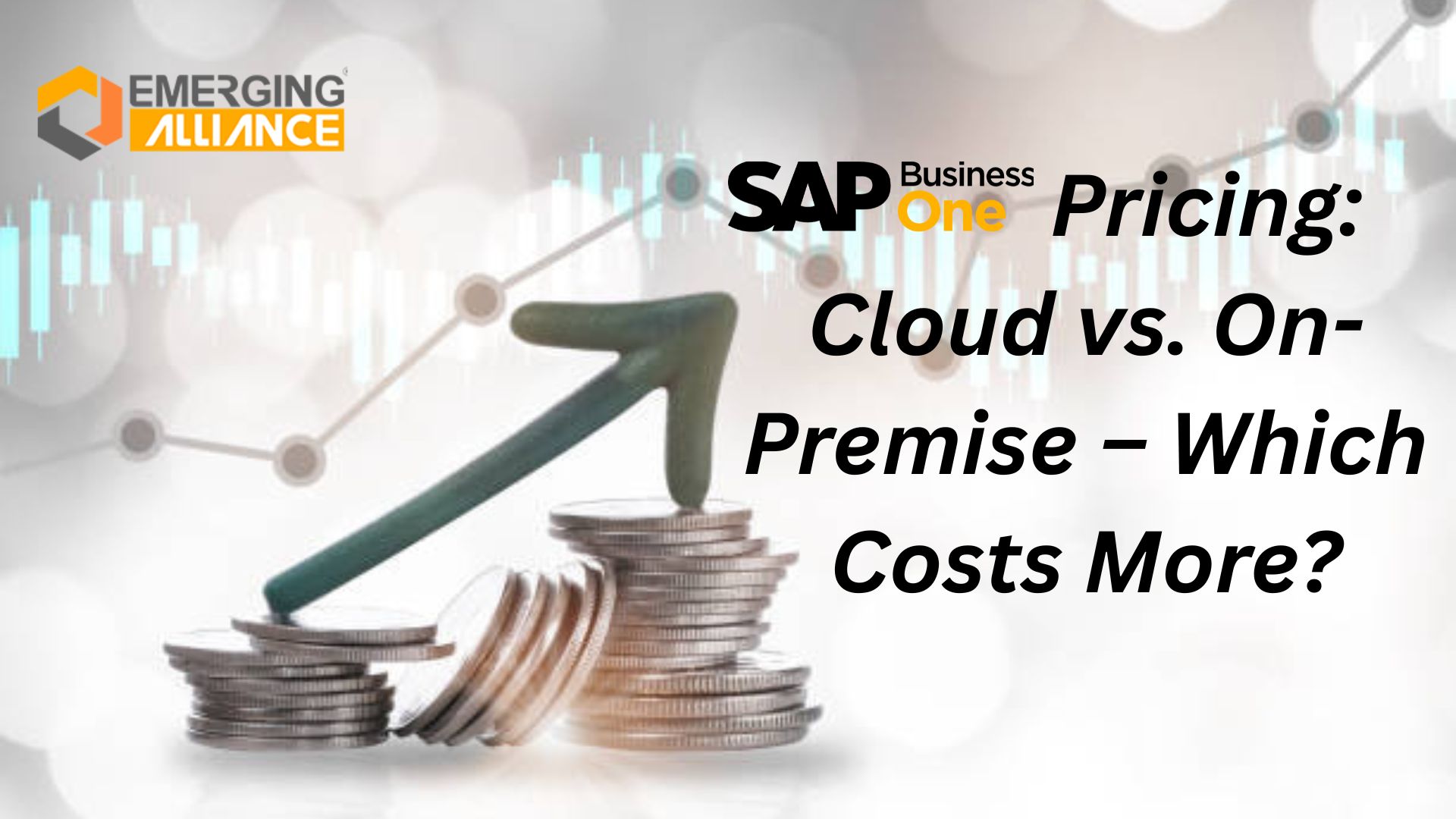
SAP B1 Pricing: Cloud vs. On-Premise – Which Costs More?

SAP Business One Pricing: Cloud or On-Premise – What’s More Affordable?
SAP Business One (SAP B1) is a widely adopted ERP solution that helps small and medium-sized businesses (SMBs) streamline their operations. When considering SAP B1, businesses must decide between cloud-based and on-premise deployment models, both of which have distinct pricing structures and long-term cost implications. This blog explores the key differences between these two models and highlights which one offers better value for your business.
Understanding SAP B1 Pricing Models
SAP Business One offers two primary deployment models:
- Cloud-Based SAP B1
- On-Premise SAP B1
Both models come with unique advantages and varying cost components. Let’s take a closer look at how each model works and what influences the pricing.
Cloud-Based SAP B1 Pricing Overview
In a cloud-based model, SAP B1 is hosted on a remote server, giving businesses the flexibility to access the system from anywhere. This model operates on a subscription-based pricing structure, where businesses pay a recurring fee based on the number of users and modules required.
Key Factors Influencing Cloud-Based SAP B1 Costs:
- Subscription Fees: Payment is based on a monthly or annual plan.
- Hosting and Maintenance: Hosting is managed by a third-party provider, including system maintenance and security.
- Automatic Updates: Regular upgrades and feature enhancements are included, ensuring system security and compliance.
✅ Best For:
- Growing businesses needing flexibility and scalability
- Companies seeking minimal IT infrastructure management
On-Premise SAP B1 Pricing Overview
The on-premise model involves installing SAP B1 on a company’s internal servers. Unlike the subscription model, on-premise deployment requires a one-time software license fee, with ongoing costs for maintenance and upgrades.
Key Factors Influencing On-Premise SAP B1 Costs:
- License Fees: A one-time license fee based on the number of users and selected modules.
- Infrastructure Investment: Costs associated with server hardware, data storage, and IT management.
- Maintenance and Support: Businesses are responsible for maintaining and securing their on-premise servers.
✅ Best For:
- Businesses prioritizing data control and security
- Companies with a robust IT infrastructure to manage in-house systems
Comparing Cloud vs. On-Premise SAP B1: Which Costs More?
| Factors | Cloud-Based SAP B1 | On-Premise SAP B1 |
|---|---|---|
| Initial Investment | Low | High |
| Recurring Costs | Subscription-Based | Maintenance Costs Only |
| Maintenance | Included in Subscription | Managed Internally |
| Data Security | Managed by Provider | Controlled by Company |
| Customization | Limited | Highly Customizable |
| Scalability | Easy to Scale | Requires Additional Hardware |
Pros and Cons: Cloud vs. On-Premise SAP B1
✅ Cloud-Based SAP B1 – Pros:
- Lower initial investment
- Quick implementation and easy scalability
- Minimal IT management required
❌ Cloud-Based SAP B1 – Cons:
- Recurring subscription fees
- Limited control over data and system customization
✅ On-Premise SAP B1 – Pros:
- Greater control over data and security
- Fully customizable to meet business needs
❌ On-Premise SAP B1 – Cons:
- Higher initial setup costs
- Ongoing maintenance and IT resource dependency
Which SAP B1 Model Is Right for You?
The choice between cloud-based and on-premise SAP B1 depends on several factors, including:
- Business Size and Growth Plans: Cloud models offer greater flexibility for growing businesses, while on-premise solutions are better suited for organizations seeking long-term control.
- IT Capabilities: If your company has a dedicated IT team to manage servers and infrastructure, an on-premise solution might be a good fit. Otherwise, a cloud deployment may reduce the need for in-house IT management.
- Customization Requirements: On-premise models provide more flexibility for businesses requiring complex customizations and integrations.
Final Verdict: Which Costs More?
Cloud-Based SAP B1 generally offers a lower initial investment with predictable recurring costs, making it ideal for growing businesses. On the other hand, on-premise SAP B1 may involve a higher initial cost but can offer long-term savings for businesses that prioritize data control and customization.
The right choice depends on your organization’s growth trajectory, budget, and IT capabilities.
Choosing between cloud and on-premise SAP B1 deployment is a critical decision that affects the total cost of ownership and long-term business performance. Assess your business requirements, evaluate cost implications, and align your choice with your growth strategy.
FAQs
1. Which model is more suitable for a growing business?
Cloud-based SAP B1 is better suited for growing businesses due to its scalability and lower initial costs.
2. Is on-premise SAP B1 more secure?
Yes, on-premise models provide greater control over data security, making them ideal for industries with strict compliance requirements.
3. How customizable is SAP B1 in the cloud compared to on-premise?
On-premise SAP B1 offers greater flexibility and customization options compared to cloud deployments.
4. Can I switch from cloud to on-premise later?
Yes, it is possible to migrate from cloud to on-premise, but it may involve additional migration costs and technical challenges.
5. Does cloud SAP B1 require additional IT support?
No, cloud deployments are managed by the provider, reducing the need for internal IT resources.
💡 Still unsure about which SAP B1 model fits your business needs? Contact us at https://www.emerging-alliance.com/ today for expert guidance and tailored recommendations!


